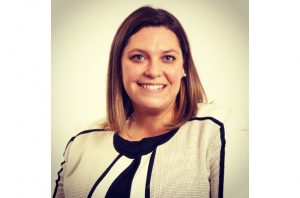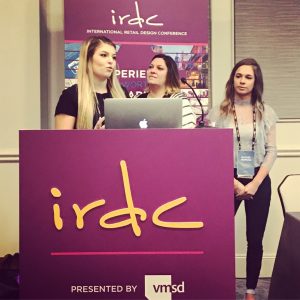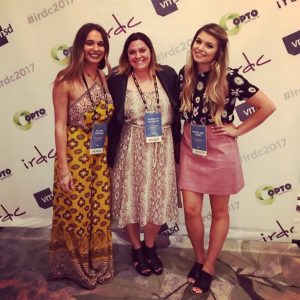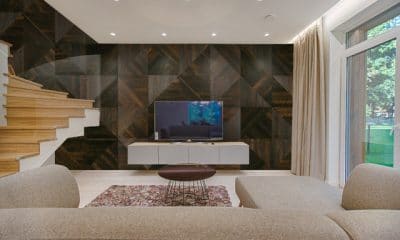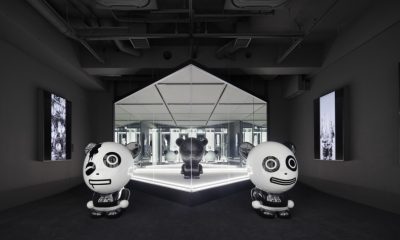What is the future of retail? This is a question that we’re all constantly trying to answer. For years, we’ve talked about the importance of the millennial generation, who they are and what our insights say they want.
But what is their vision for the future of retail? As an educator working with millennials for the past decade – as they emerge from the embrace of their family and embark on discovering who they are and what they want their future to be – it has been my goal to interpret that vision and channel it into a positive change within our consumer culture.
As I began developing the retail design studio at The Ohio State University (Columbus, Ohio), my objective was to develop a project that built upon my years of hands-on insights with this generation, while providing students a platform to connect directly with the practice of retail design. My hope was this would allow their voices to be heard and their viewpoints to begin shaping retail’s future. This newly developed studio in the Department of Design afforded multidisciplinary design teams an opportunity to communicate their belief system, to question what it is to be a retailer in today’s marketplace, and to define what they envision as the future of retail.
Rachel Herman and Madeline Cipro presenting at OSU's Department of Design retail design studio competition, Spring 2017 / Courtesy of Rebekah L. Matheny, Columbus, Ohio
Through the support of the local Columbus-based retail design community, VMSD magazine, and attending the International Retail Design Conference (IRDC) in New Orleans just last month, my goal has been realized. Throughout the spring semester, students engaged with retail designers from all disciplines, as well as design researches; they also visited firms for workshops and presentations. Columbus-based design firm Chute Gerdeman hosted our midterm review, opening their offices for an informal critique in a gallery-style setting, as well as holding a formal evaluation that provided both professionals and students an opportunity to engage in design discourse. The final jury review brought together the expertise of Brian Shafley (Chute Gerdeman), Kevin Schmidt (Fitch), Jennifer Fredritz (WD Partners), Marty McCauley (FRCH Design Worldwide), as well as VMSD editors Jennifer Acevedo, Kaileigh Peyton and Carly Hagedon, to select the most innovative and successful project to win the studio competition.
The objective of the studio was to create real impact on both the students and the retail community by connecting retail design professionals with millennial, multidisciplinary design students to explore issues relating to retail design’s global, environmental and social impact. And I think we met that goal! However, the work is never done, I can't wait to keep this momentum going again next Spring.
Advertisement
But don’t just take my word for it: During the end of the semester anonyms assessment, students said that they took this course specifically for the opportunity to engage with professionals and to “freely express what they desire for their future” in regards to retail and consumer culture. One student said, “As an industrial designer, I’ve struggled to find an emotional engagement in my projects, [and] this studio was the perfect opportunity to practice serving a purpose more than just crafting another product.” Another student wanted to “neutralize the evil in retail,” meaning that s/he wants retail to be “more than just selling another shirt I don’t need, but to have a greater purpose, to make a positive impact on the world.”
Rebekah Matheny, Madeline Cipro and Rachel Herman at IRDC 2017 in New Orleans / Courtesy of Rebekah L. Matheny, Columbus, Ohio
The overall experience had a profound impact on the winning team, which included students Madeline Cipro (Interior) and Rachel Herman, (Visual Communication) who envisioned two co-branded sustainable experiences for environmentally responsible brands Boxed Water and WeWood: a Central Park, New York-based sustainable community-focused flagship store and a pop-up shop concept for concerts and festivals. They both recently reflected on their journey:
Cipro says, “Before this studio, I had a misconception about what retail design was about. I had this idea in my head that retail was very profit-driven, with ‘function follows form’ design, and projects that had no lasting impact on the people who interact with them. I definitely didn’t have an interest in pursuing a career in retail. Honestly, I signed up for the elective class to diversify my portfolio, since retail wasn’t a discipline I had experience with previously. However, my idea of retail culture and design has completely changed due to this studio class. After Rebekah’s lectures, the project prompt and our self-guided research, I fully grasped the potential retail has both socially and environmentally.”
Before taking the studio, Rachel Herman says, “I had always viewed most retail brands as shallow and money-hungry. As a millennial, having grown up in a world with so much stuff, I place more value on the retail experience than the item. I tend to spend my money on products that hold a special story, meaning or personalized experience. The studio has really impacted my choices when it comes to buying. I am a more conscious consumer, paying special attention to the purpose and cause of the brand, how long the product will last and its impact on the environmental and social world. This mindset translates into how I design and I am more willing and passionate about designing for the realm of retail and redefining the retail experience.”
Madeline Cipro, Rebekah Matheny and Rachel Herman presenting at IRDC 2017 in New Orleans / Courtesy of Rebekah L. Matheny, Columbus, Ohio
Advertisement
As part of the VMSD sponsorship, the winning team also had the privilege to present their final project during a special IRDC session. Here are their reflections on what that experience meant to them:
“After completion of the studio, I attended IRDC in New Orleans, where I was able to see that what we were researching in school were also trends in the retail design field today.” Cipro says, “Many presentations and sessions I attended had overlapping themes of experiential design, social connection, sustainability, and the idea of the ‘un-store’ to connect brand beliefs to the community. This was important to see because it allowed me to connect my academic projects to real-world projects. Design studios through school have a negative association of being too conceptual or ‘blue-sky,’ so when I’m applying for jobs these projects can easily be discredited or overlooked. IRDC’s sessions helped reemphasize the importance of the trends we’ve studied during this project, given more credit to my school projects, and helped prepare me for our IRDC presentation later in the conference.”
Cipro goes on to say, “I have gained so much experience and knowledge from this studio project and through attending and presenting at IRDC. As a young professional, it has impacted my career goals and helped prepare me for choosing a career direction. As I have just graduated, and am searching for career opportunities in New York, closer to where I’m originally from, the exposure to professionals through this studio and IRDC were very beneficial to bridging this transition between academia and profession. I am so grateful for these opportunities and feel inspired and ready for new challenges.”
Madeline Cipro, Rebekah Matheny and Rachel Herman presenting at IRDC 2017 in New Orleans / Courtesy of Rebekah L. Matheny, Columbus, Ohio
Herman says, “Winning the studio competition has impacted my professional path from the moment I graduated. I have gained momentous insight on the current and future trends of retail design from attending IRDC, hearing from and holding conversations with the industry’s leading professionals. I have been able to take the knowledge acquired from the studio and understand how it applies in the professional world. The whole experience has definitely influenced my career direction. Whether designing within retail or another industry, I am more inclined to seek out a company, product, etc., that designs for the betterment of the world.”
With the spark that was ignited last spring, I’m eager to plan the 2018 studio and continue the dialogue between academia and the practice of retail design. My hope is to expand our reach to work with more design firms and hopefully begin to engage specific retailer sponsors, as well. It’s clear how beneficial the collaborative nature of the studio has been for the students. I hope the students’ concepts have also challenged (or at least helped) you to think differently about what the future of real is, maybe even from their perspective.
Advertisement
If you had the chance to work with us during the semester or attended our session at IRDC, please take a few minutes to help us assess the studio and begin planning for the next one by completing this brief survey.
Rachel Herman, Rebekah Matheny and Madeline Cipro at IRDC 2017 in New Orleans / Courtesy of Rebekah L. Matheny, Columbus, Ohio
Rebekah L. Matheny is the assistant professor of interior design in the Department of Design at The Ohio State University (Columbus, Ohio), where she teaches courses in interior finish materials, lighting design and design studios that integrate a retail brand strategy process. Matheny’s research investigates the sensory perception of interior finish materials and their application in retail design to create an emotional connection between the customer and the brand. Follow Rebekah and her journey with materials on Instagram @rebekahmathenydesign and to start a dialogue about the sensory experience of materials visit her web site interiormaterialsmatter.com
Madeline Cipro is a recent graduate from The Ohio State University with a Bachelor of Science Degree in Interior Design. Her studies and internship experiences have instilled a passion for research-based, human-centered, socially and environmentally conscious design. She hopes to utilize these skills and passions as an interior designer in New York City where she is currently seeking career opportunities.
Rachel Herman is a recent graduate from The Ohio State University with a Bachelor of Science Degree in Visual Communication Design. During her time in the Department of Design, she has developed a particular passion for design strategy, user experience (UX) and motion design. Rachel believes in creative research, functional design and engaging experiences, and is currently pursuing career opportunities in Ohio, Chicago or the East Coast.
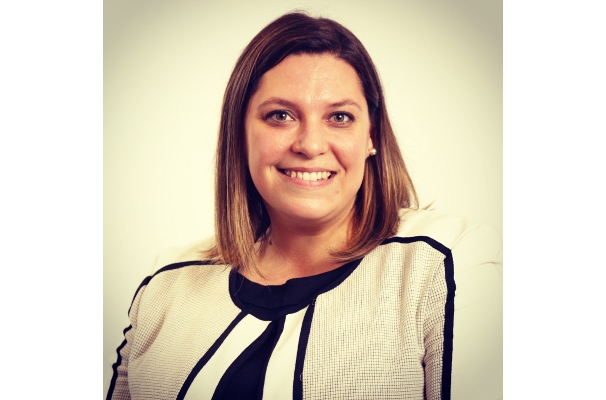

 Photo Gallery3 days ago
Photo Gallery3 days ago
 Headlines1 week ago
Headlines1 week ago
 Sector Spotlight2 weeks ago
Sector Spotlight2 weeks ago
 Headlines1 week ago
Headlines1 week ago
 Headlines4 days ago
Headlines4 days ago
 Headlines2 weeks ago
Headlines2 weeks ago
 Designer Dozen1 week ago
Designer Dozen1 week ago
 Headlines2 days ago
Headlines2 days ago
